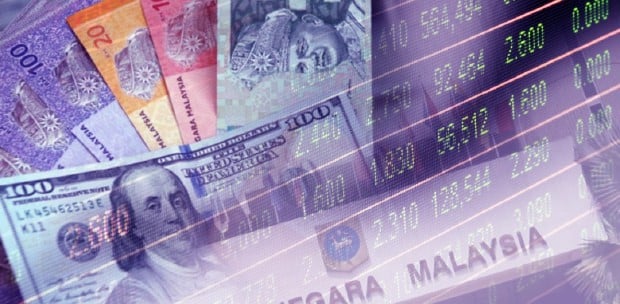The Economic and Financial Indicators table of The Economist (Sept 3 to 9) tells us the current state of the global economy, in particular the health of the 42 nations that are listed.
Observing the columns of budget balance and the currencies vis-a-vis the US dollar, one sees that almost all nations, except Russia and Peru, experienced currency declines of various proportions, and the budget balance column shows deficits in almost all, except Denmark, Norway and Saudi Arabia.
In terms of currency value, the greenback seems to be strong despite the twin deficits experienced by the US all these years.
The declines of many currencies vis-a-vis the US dollar a year ago were quite large — Japan at 20.8 per cent, Europe at 14.1 per cent, Norway at 12.2 per cent, Sweden at 18.7 per cent, Malaysia at 7.1 per cent, India at 8.1 per cent, South Korea at 13.3 per cent and Pakistan at 23.9 per cent.
Turkey and Argentina are badly hit with declines estimated at 54.3 and 29.5 per cent, respectively. The consequence of currency declines is definitely felt in import prices.
Depending on the size of imports, domestic inflation will accelerate.
Additionally, the rate of inflation, as measured by the consumer price increases, is high in the US at 8.5 per cent per annum, 9.1 per cent in Europe, 8.5 per cent in Sweden, 7.9 per cent in Germany, and 7.6 per cent in Canada.
In Asia, the inflation rate is significant.
It is 7.6 per cent in Thailand, 6.3 per cent in South Korea, 7.0 per cent in Singapore and 6.7 per cent in India.
The inflation rate is higher in Pakistan at 24.9 per cent, 79.6 per cent in Turkey and 71 per cent in Argentina. These rates are referred to as runaway inflation.
Inflationary pressures will be alleviated by raising interest rates. Central banks will respond by increasing their discount rates.
This is one reason why our overnight policy rate has increased several times this year even though inflation is under control at 4.4 per cent.
Another reason for the higher interest rate is to protect national currencies from going offshore, especially to the US. Unemployment, like inflation, is equally high.
In the whole of Europe, the unemployment rate is 6.6 per cent. It is 4.9 per cent in Canada, 3.8 per cent in Malaysia, 5.7 per cent in the Philippines and 5.8 per cent in Indonesia.
Surprisingly, Thailand has a very low unemployment rate of 1.5 per cent.
The declining exchange rates mean imports cost more. The cost of living goes up, given our dependence on imported food, including rice. It will also impact imported services as we have an affinity for overseas' travel to meet holiday and spiritual needs.
During the 1997/98 financial crisis, we pegged the ringgit and implemented a capital-control measure to protect the currency and businesses from attacks and speculation. It was all right then, because very few countries faced the East Asian financial contagion.
The situation is different now. The whole world is impacted by rising interest rates, the strong dollar and inflation. Pegging the currency may not be impactful and can be costly as other currencies are declining too.
A country has to respond to these situations. Promote exports and slow down imports. Take advantage of the situation by encouraging domestic tourism and promoting domestic expenditure. It appears that Thailand has done this.
We must be cautious about using foreign goods and services as they involve foreign exchange.
Greater effort must be made to discourage purchases of foreign goods and services. This sounds protectionist, but we have done it before.
Perhaps one easy way is to delay purchases of heavy equipment and machinery, and to defer sending students abroad and have them attend courses locally.
A greater effort to involve the youth, especially unemployed graduates, in modern farming can attract them to self-employment.
The writer is adjunct professor of Universiti Malaya and Academic Fellow of Universiti Sains Malaysia
The views expressed in this article are the author's own and do not necessarily reflect those of the New Straits Times





